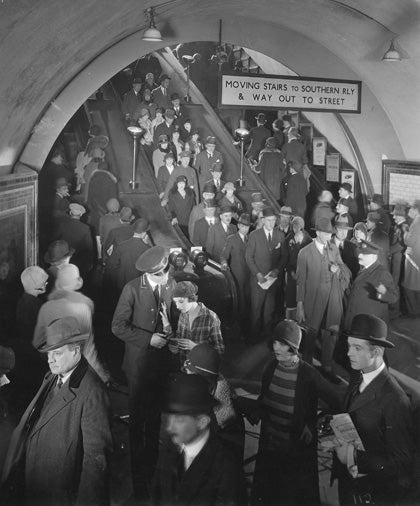Design Inspiration: The Orange Dot Sock by Fortis Green
'Posters are a form of picture-writing. A simplified treatment is easier read… One hears occasionally talk about flat colour being overdone, but no more suitable treatment for posters has yet been devised.'
- Horace Taylor 1933

Fortis Green’s vibrant ‘Abelthorpe’ Orange Dot Sock is based on the bold colour palette of Horace Taylor's 1924 poster titled ‘Brightest London is best reached by Underground’. Published by the then Underground Electric Railway Company Ltd, Taylor’s dazzlingly vibrant artwork still draws attention 90 years on. In last year’s celebrations marking the 150th anniversary of the London Underground, ‘Brightest London’ was voted as the No.1 London Underground poster of all time in a public poll undertaken by the London Transport Museum. Director of the Museum Sam Mullins states “The number of votes for Brightest London is impressive given the public had a large selection from which to choose.”
Horace Taylor was born in London in 1881. He started his career as a stage designer and cartoonist for the Manchester Guardian but from 1922 on he focused almost entirely on commercial art, designing posters for a number of clients including the Underground and Empire Marketing Board. Taylor’s series of Underground posters promoted taking the tube as glamorous and fashionable and in an era of smog and black and white films, any colour image would have appeared dazzlingly vibrant.

Film still from Director Anthony Asquith's 1928 silent film 'Underground'
The first illustrated tube poster appeared in 1908 but the 1920s and 1930s were a golden era, as the Underground became a pioneering patron of poster art - a legacy that continues today. Many famous artists including Edward McKnight Kauffer, Man Ray and Paul Nash were commissioned to create artworks designed to capture the spirit of the tube while Horace Taylor's design shows how far experiments with flat colour on the Underground had advanced since the introduction of graphic posters sixteen years earlier. All unnecessary detail has been removed to create a striking image. In a personal twist, Taylor often liked to paint himself into his posters and in ‘Brightest London’ he can be spotted as the man with the top hat and the beard on the middle escalator. Horace Taylor passed away in 1934.
The Orange Dot Sock by Fortis Green can be purchased through our online store

1920s Art Deco posters by Horace Taylor
